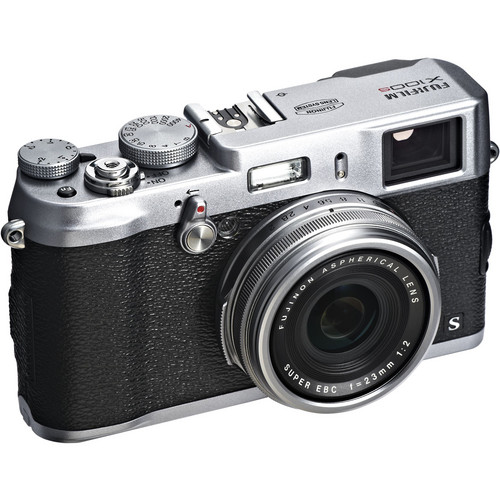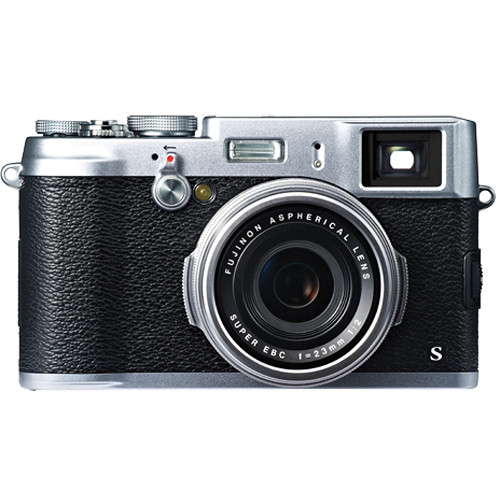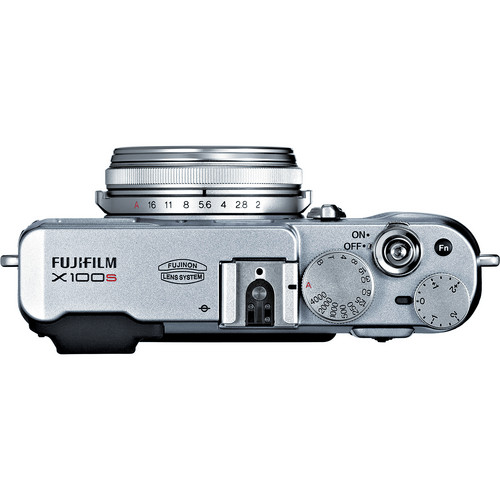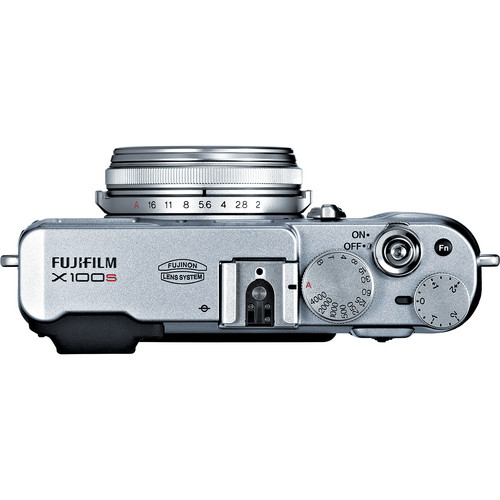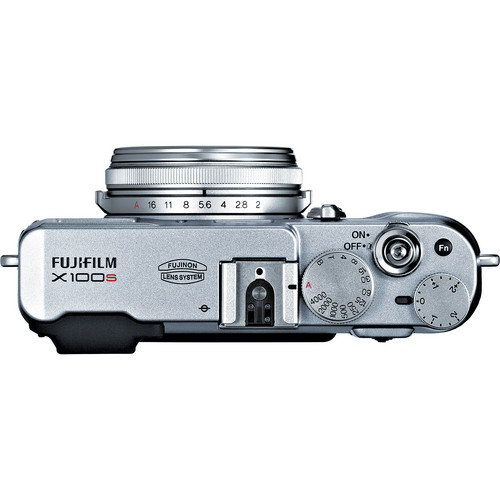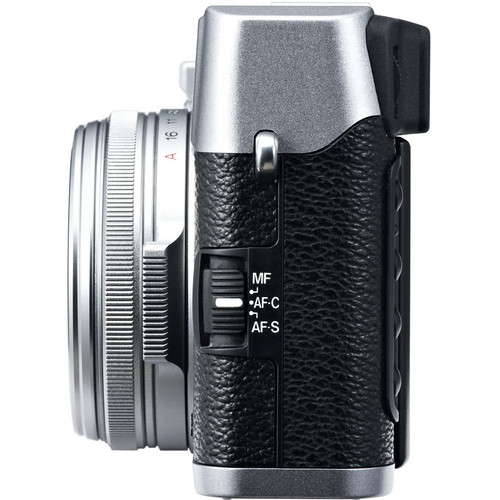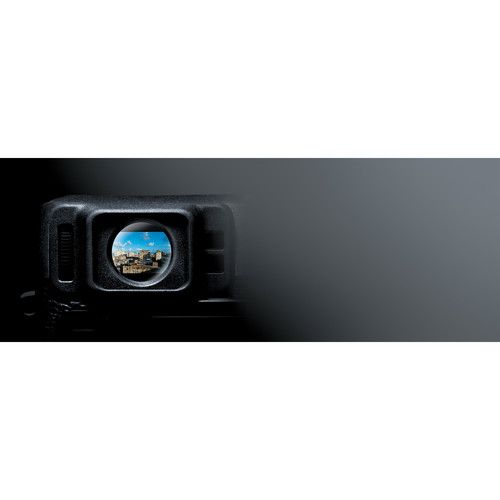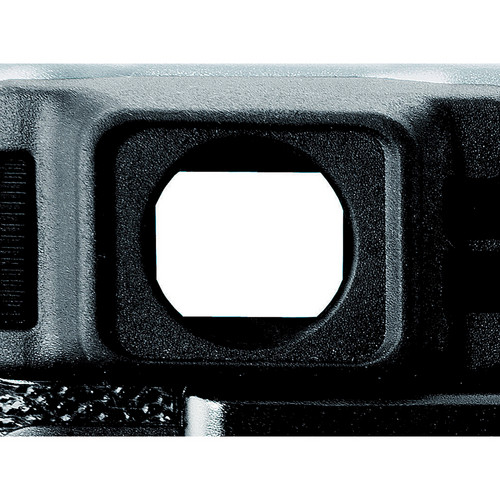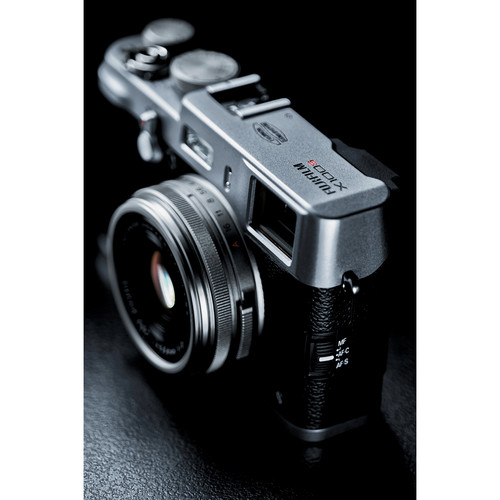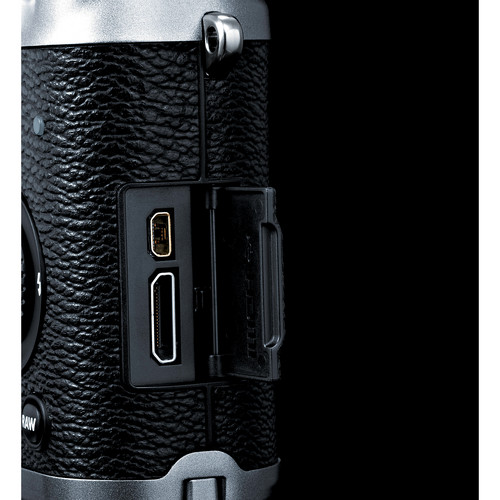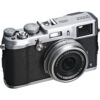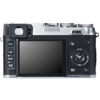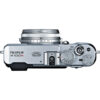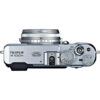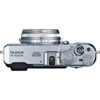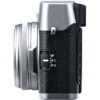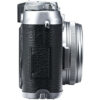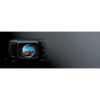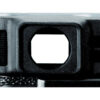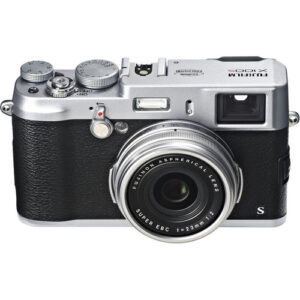FUJIFILM X100S DIGITAL CAMERA (SILVER)
Key Features
- 16 Mp APS-C X-Trans CMOS II Sensor
- EXR Processor II
- Fujinon 23mm f/2 Fixed Focal Length Lens
- Hybrid Optical and Electronic Viewfinder
- 2.8″ 460k-Dot LCD Monitor
- Full HD 1080p Video at 60fps
- Intelligent Hybrid AF System
- Expandable ISO 100-25600
- Film Simulation and Advanced Filters
- Die-Cast Magnesium Body Construction
₹73,900.00
Best Buy ₹72,422.00
Free Shipping across India
Have a question? Ask Us Chat | Email | Call
FUJIFILM X100S DIGITAL CAMERA (SILVER)
The silver Fujifilm X100S Digital Camera features a 16 megapixel APS-C-sized X-Trans CMOS II sensor and an EXR Processor II image processor to provide high quality imagery and exceptional camera performance. The combination of the sensor and processor enables a native sensitivity range from ISO 200-6400, which is further expandable to ISO 100-25600. Fujifilm’s proprietary X-Trans sensor uses a unique randomized pixel array in order to avoid the use of a resolution-reducing optical low-pass filter, therefore providing images with the utmost sharpness and clarity. This imaging system is benefitted by the Intelligent Hybrid AF system, which uses both contrast- and phase-detection methods to acquire focus quickly and accurately. The EXR Processor II also delivers fast performance speeds to all aspects of the camera, ranging from quick startup and shutter lag times to a fast 6fps continuous shooting rate.
The X100S incorporates a unique Hybrid Viewfinder that blends the capabilities of both optical and electronic viewfinders into a single entity. The optical viewing benefits include a clear, natural method of composing your scene with the added benefit of exposure and camera settings being displayed in the perimeter of the frame. The electronic viewing method utilizes a 2,360k-dot LCD monitor to provide clear, sharp live view monitoring with the ability to previsualize focus and exposure settings. You can toggle between both viewing methods quickly and easily using a lever located on the front of the camera body. Manual focusing capabilities are greatly enhanced when using the electronic viewfinder in connection with either the Digital Split Image function or manual focus peaking; both of which aid in acquiring exacting focus. In regard to auto focusing, a unique Intelligent Hybrid AF system employs both contrast- and phase-detection methods to focus accurately and as quickly as 0.08 second.
A built-in 23mm f/2 fixed focal length lens is used and provides a 35mm-equivalent focal length of 35mm, which is ideally suited as an everyday-use wide-angle lens. The fast f/2 maximum aperture benefits both low-light shooting as well as control over the focus in the image. The lens has been intentionally designed as a non-interchangeable, non-collapsible, and fixed in focal length in order to provide the highest quality optical performance possible. Its construction includes a single double-sided aspherical lens and features a Super EBC (Electron Beam Coating) to reduce lens flare and ghosting. A three-stop neutral density filter has also been built-in to allow greater control over your exposure settings and selective focus applications.
Full HD movie recording is supported up to 1920 x 1080p at 60fps with a 36Mbps bit-rate for clear, fluid-looking videos. Focus can be manually controlled during recording, while audio levels, white balance settings, and Film Simulation modes can also be applied to refine the overall appearance of your movies. Film Simulation modes make use of Fujifilm’s history of producing both negative and slide films, and allow you to apply those films’ characteristics to your digital imagery to better suit your intended look.
Surrounding the camera’s technology is an elegantly designed camera body that features die-cast magnesium top and bottom plates, precision-milled metal camera controls, and a durable synthetic leather body wrap.
16 Mp APS-C X-Trans CMOS II Sensor
A large APS-C CMOS image sensor is integrated into the X100S to provide high image quality and detail. Using Fujifilm’s unique X-Trans bespoke pixel array, the sensor is designed with a randomized pixel pattern to eliminate the need of an optical low-pass filter for reducing moiré and aliasing. By removing this filter from the design, higher image sharpness is possible. Lens Modulation Optimizer (LMO) factors are also taken into account using the EXR Processor II, which helps to automatically compensate for aberrations and diffraction blur in order to produce images with the utmost inherent sharpness. The image sensor also utilizes backside illumination technology to help with the integration of phase-detection pixels into the sensor for improved autofocus performance without affecting image quality.
The X-Trans sensor also pairs well with the EXR Processor II to provide highly effective noise reduction and a clean signal-to-noise ratio. This enables smoother-looking imagery that becomes especially apparent when photographing in low-light situations with an expanded sensitivity range of ISO 100-25600.
EXR Processor II
Aside from benefitting low-light performance, the EXR Processor II also provides quick performance throughout the entire camera system. The camera start-up time is about 0.5 second, shutter lag is about 0.01 second, and the shooting interval time is about 0.5 second. Additionally, this processing power provides enough speed to capture full resolution images at a continuous rate of 6fps for up to 31 consecutive frames.
Intelligent Hybrid AF
Intelligent Hybrid AF is a quick, responsive autofocus system that employs both contrast- and phase-detection methods to acquire focus quickly in a wide variety of shooting situations. Clear focus can be attained in as little as 0.08 second to aid in catching fast-paced movement more easily.
Three focus modes are available (AF-S, AF-C, and M) for greater control over how the X100S achieves sharp focus. When working with autofocus, the AF area is divided into a 49-point matrix in order to gain clear focus of any type of subject matter. Additionally, a built-in AF assist lamp is available for aiding the focus system when photographing in low-light situations
Fujinon 23mm f/2 Fixed Focal Length Lens
The built-in 23mm f/2 fixed focal length lens gives a 35mm-equivalent focal length of 35mm, making it an ideal single prime lens length for everyday shooting. This fast wide-angle lens is purposefully designed as non-interchangeable and non-collapsible in order to garner the highest optical quality possible. The rear lens group is designed with a large diameter in order to allow its position nearer to the sensor to render an overall slim profile for the whole camera. This closeness to the image sensor also provides optimal edge-to-edge sharpness and illumination for enhanced image quality.
The simple lens construction is comprised of just eight elements within six groups, including a single double-sided aspherical element to reduce aberrations and improve sharpness. Lens elements also feature the Super EBC to reduce lens flare and ghosting while maintaining image contrast and color fidelity.
A three-stop neutral density filter is also incorporated into the design to allow for more control over exposure durations and promote the use of wider apertures. This allows for a more fluid rendering of moving subjects as well as greater control over your focus plane. A nine-blade aperture diaphragm benefits the ability to shoot with wider apertures by producing a more aesthetically pleasing out of focus image quality. Additionally, this lens is capable of focusing on subjects as close as 3.9″ / 10cm for macro-like shooting.
Optical and Electronic Hybrid Viewfinder
Both optical and electronic viewing tools are incorporated into the unique Hybrid Viewfinder, which provides both the simplicity of an OVF with the technological advancements of an EVF. Switching between both viewing methods is done with the Viewfinder Switch Lever located on the front of the camera body, enabling quick transitioning between both modes. The OVF has its benefits in providing a clear, unadulterated view of the scene you’re photographing and reduces the shutter lag time to a minimum. For fine-tuning of focus, exposure, white balance, and other camera settings, the EVF gives you the ability to monitor all of the applied settings prior to making the exposure.
A conventional bright frame viewfinder is used as the base construction for the Hybrid Viewfinder, and from which the LCD monitor was incorporated into. A viewfinder shutter can be opened or closed in order to use either the OVF or EVF, and with this method the highest clarity is attainable using both viewing methods. An approximate horizontal apparent field of view of 26° and 0.5x magnification offer comfortable viewing conditions that best suit the built-in 35mm wide-angle lens. High-refractive glass, a high-precision prism, and Super EBC coatings also contribute to producing a clear view for both the EVF and OVF.
While the optical viewfinder does give crisp natural viewing abilities, it is also aided by an LCD projection of customizable shooting information along the border of the frame. This information is useful in that it allows you to continuously use the OVF without having to check settings on the LCD or with the EVF setting.
The EVF provides you with 100% frame coverage by way of the 0.48″ / 12.19mm 2,360k-dot LCD monitor. This monitor is able to provide a high resolution live view and is useful for confirming focus , exposure, depth of field, and white balance accuracy. The EVF can also be used for menu navigation and review of imagery.
An eye-sensor is located on the viewfinder to automatically turn off the rear 2.8″ LCD monitor during eye-level viewing. These settings can further be adjusted to always keep the LCD off (and only use the viewfinder) or to always keep the viewfinder off (and only use the LCD).
The Hybrid Viewfinder also gives way to efficient and effective manual focusing performance. By using the phase-detection pixels located on the imaging sensor, Digital Split Image is able to assist in acquiring precise focus by showing comparative in and out of focus areas of the image. Also contributing to manual focus accuracy, focus peaking has been integrated and enables a more objective system of focusing by way of highlighting sharp edges and lines of contrast in a clear manner.
Design in Mind
The X100S is designed to mimic film-based cameras and exhibits a clean, functional, and compact form-factor that emphasizes the ability to make photographs in a direct, intuitive manner. The top and base components are constructed from die-cast magnesium for durability, while also remaining lightweight. The aperture ring, shutter speed dial, and exposure compensation dial are all constructed from precision-milled metal to give a sturdy, tactile reinforcement when controlling camera settings. The body is finished with a synthetic leather wrap that provides additional durability and tack for improved handling. Small, nuanced details, such as the ability to change sound of the shutter, firm aperture click stops, and an elegant metal lens cap are also kept in mind to provide even greater satisfaction during use.
An efficient graphical user interface promotes greater intuitiveness for menu navigation and monitoring. The Q Button gives a one-touch solution to modifying commonly used camera settings quickly and easily. All of the menus and setting navigation is done on the rear 2.8″ 460k-dot LCD that also provides high definition playback of still images and video. This monitor can be used to display an exposure histogram, an electronic horizon leveling gauge, and focus point zoom, too.
Film Simulation Mode
Taking advantage of Fujifilm’s vast history in traditional film-based photography, the X100S integrates several Film Simulation modes to mimic the look and feel of some Fujifilm’s classic film types. Pulling from their line of transparency films, PROVIA offers natural-looking tones for everyday shooting, VELVIA produces a more dramatic and rich tonality with deeper color saturation, and ASTIA gives less contrast for a softer depiction of skin tones. Mimicking their negative films, PRO Neg. Std. gives smooth image tones that are suitable for accurate color renditions, while PRO Neg. Hi produces a more dramatic feel with the ability to draw color out of a variety of lighting conditions. In addition to the colorful benefits of these Film Simulation modes, there are also monochrome modes that simulate the look of traditional yellow, green, and red black and white contrast filters. A sepia mode is also available for producing an inherently nostalgic look.
Full HD Movie Capabilities
Full HD movie recording is possible with multiple frame rates and formats up to 1920 x 1080p at 60fps to produce smoothly-depicted movement. A high bit-rate of 36Mbps enables greater clarity when shooting video, which is ideal for showcasing your movies on an HDTV utilizing the built-in HDMI mini connection.
While recording video you can manually control the focus settings via the lens, and, additionally, you can control the audio level in four steps. A 3x digital zoom is available during movie shooting to effectively triple the lens’ focal length to 105mm (35mm equivalent). White balance settings and Film Simulation modes can also be applied to movie recording to fine-tune the appearance of your videos.
Advanced Filters
Eight Advanced Filters are built-in to the camera to enhance the aesthetic quality of imagery further:
- High Key
- Low Key
- Soft Focus
- Toy Camera
- Miniature
- Pop Color
- Dynamic Tone
- Partial Color (Red, Orange, Yellow, Green, Blue, Purple)
Other Camera Features
An in-camera RAW converter lets you record your images in 14-bit RAW and process them prior to computer-based editing procedures. This process enables you to modify the exposure, white balance, and other controls directly through the menu interface. Additionally, for more thorough processing of files, SILKYPIX software is included for RAW conversion and processing on your computer.
Multiple exposure mode gives you the ability to overlay imagery in-camera. When working in this mode, subsequent exposures can be paired and the final appearance can be previewed on the LCD or in the EVF before making the final exposure.
The exposure controls for the camera are all physical and easily accessible via the shutter speed dial, aperture ring, and exposure compensation dial. This physicality offers instant familiarity and intuitiveness when working, as well as making it simpler to work without having to remove your eye from the viewfinder.
Both Time (T) and Bulb (B) exposure settings are available for recording long exposures. T enables exposure lengths between 1/2 and 30 seconds, and B allows you to keep the shutter open for a maximum duration of 60 minutes.
Motion panorama mode allows you to record expansive views up to 360° wide in a seamless, sweeping manner.
A built-in flash provides additional illumination to imagery for photographing in dark conditions. The flash will automatically synchronize with the shutter at all shutter speeds from 1/2000 sec. or slower.
Four different auto bracketing modes are available: Dynamic Range, Film Simulation, AE, and ISO Sensitivity.
| Brands | Fujifilm |
|---|
Imaging
|
Sensor Resolution |
Effective: 16.3 Megapixel |
Exposure Control
|
Aspect Ratio |
1:1, 3:2, 16:9 |
|
Bit Depth |
14-Bit |
|
Coverage |
85/100% |
|
Diopter Adjustment |
-2 to +1 |
Flash
|
Flash Modes |
Auto, Auto/Red-Eye Reduction, Flash On w/ Red-Eye Reduction, Forced On, Off, Slow Sync, Slow Sync/Red-Eye Reduction |
|
External Flash Connection |
Shoe Mount |
Shipping Policy
- Free Shipping
- No shipping charges throughout India.
- We deliver throughout India, Monday-Saturdays, excluding India Public holidays.
- We would dispatch the order in 1-2 working days and it should reach to you in minimum 4 days and maximum in 8 working days
- If there is any delay or if the customer has any quarries relating to shipment they can reach to us on 9356372991.

